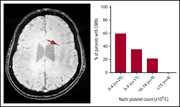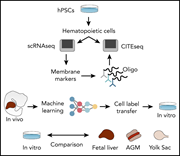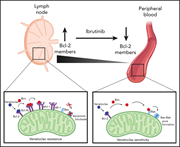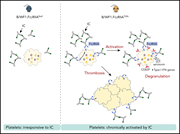Issue Archive
Table of Contents
BLOOD COMMENTARIES
PLENARY PAPER
Tumor and microenvironment response but no cytotoxic T-cell activation in classic Hodgkin lymphoma treated with anti-PD1
Immune checkpoint inhibitor therapy is being investigated as a first-line treatment after being established as a standard therapy for relapsed Hodgkin lymphoma (HL). In a Plenary Paper, Reinke et al reveal the mechanism through which the anti-PD1 antibody nivolumab very rapidly clears malignant cells in first-line treatment. In sharp contrast to observations with solid tumors and relapsed HL, no clonal T-cell expansion or cytotoxic T-cell response is detectable, with withdrawal of prosurvival factors appearing to explain this initial response.
REVIEW ARTICLE
The relationship between ABO blood group, von Willebrand factor, and primary hemostasis
The biological mechanisms by which ABO blood group influences hemostasis and thrombosis are becoming clearer. Ward and colleagues review recent evidence indicating how ABO group exerts quantitative and qualitative functional effects on both von Willebrand factor and platelet biology, as well as their interactions, including during platelet plug formation at sites of vascular injury.
CLINICAL TRIALS AND OBSERVATIONS
Identification of occult cerebral microbleeds in adults with immune thrombocytopenia
Clinical Trials & Observations
Management of patients with immune thrombocytopenia (ITP) seeks to minimize morbidity both from severe bleeding and from therapy, with cerebral hemorrhage being a feared event. Cooper and colleagues used highly sensitive susceptibility-weighted magnetic resonance imaging to detect asymptomatic cerebral microbleeds (CMBs) in over 50% of patients with ITP and a platelet count of <5 × 109/L, with a lower frequency at higher counts. These data will prompt further evaluation of this imaging technique in ITP, particularly as mucosal and skin bleeding scores may not predict CMBs.
Outcomes of patients with hematologic malignancies and COVID-19: a systematic review and meta-analysis of 3377 patients
Clinical Trials & Observations
Vijenthira and colleagues performed a systematic review to estimate the risk of death and serious infection with COVID-19 among patients with hematologic malignancies in 39 studies of 3377 patients. They found that the risk of death was 34% among adults and 4% among pediatric patients, with an increased risk for older patients and no effect of recent systemic anticancer therapy.
Under COVID of the night
Clinical Trials & Observations
HEMATOPOIESIS AND STEM CELLS
Single-cell analyses and machine learning define hematopoietic progenitor and HSC-like cells derived from human PSCs
Fidanza et al used single-cell transcripts and an artificial neural network to map specific cells generated in vitro from human pluripotent stem cells (hPSCs) to phenotypically identifiable hematopoietic stem and progenitor cells naturally occurring in vivo in the human fetal liver. As well as providing a rich data set for future research, this novel approach can now be applied to any model of in vitro differentiation and to guide the production of specified cell types from hPSCs.
IMMUNOBIOLOGY AND IMMUNOTHERAPY
SARS-CoV-2–specific T cells are rapidly expanded for therapeutic use and target conserved regions of the membrane protein
Most clinical experience of adoptive immunotherapy with cytotoxic T lymphocytes (CTLs) is with treatment of viral reactivation in patients with immunodeficiency. Keller and colleagues used the same technology to generate SARS-Cov-2–specific T cells from the blood of individuals who had recovered from COVID-19 infection, raising the prospect that banked third-party SARS-CoV-2 CTLs can be used for treatment of immunocompromised patients.
LYMPHOID NEOPLASIA
Changes in Bcl-2 members after ibrutinib or venetoclax uncover functional hierarchy in determining resistance to venetoclax in CLL
Haselager et al studied serial samples from patients with chronic lymphocytic leukemia (CLL) during treatment with either ibrutinib or venetoclax, providing new insights into the dynamics of BCL2 family protein expression.
Chromosome 20 loss is characteristic of breast implant–associated anaplastic large cell lymphoma
CME
Clinical Trials & Observations
Brief Report
In this month’s CME article, Los-de Vries and colleagues report characteristic loss of chromosome 20 in breast implant–associated anaplastic large cell lymphoma, further identifying it as a distinct pathological identity among T-cell lymphomas.
PLATELETS AND THROMBOPOIESIS
FcγRIIA expression accelerates nephritis and increases platelet activation in systemic lupus erythematosus
THROMBOSIS AND HEMOSTASIS
Sustained depletion of FXIII-A by inducing acquired FXIII-B deficiency
LETTERS TO BLOOD
BLOOD WORK
ERRATUM
CONTINUING MEDICAL EDUCATION (CME) QUESTIONS
-
Cover Image
Cover Image
![issue cover]()
Wright-Giemsa–stained cytospin of a bone marrow sample isolated from an acute myeloid leukemia (AML) mouse with an FLT3 internal tandem duplication upon treatment with a combination of the menin inhibitor MI-3454 and the FLT3 inhibitor AC220. Combinatorial treatment results in differentiation of bone marrow cells and leads to complete remission. See the article by Miao et al on page 2958.
- PDF Icon Front MatterFront Matter
- PDF Icon Table of ContentsTable of Contents
- PDF Icon Editorial BoardEditorial Board
Advertisement intended for health care professionals
Email alerts
Advertisement intended for health care professionals













Elusive sentinels at the Hodgkin checkpoint